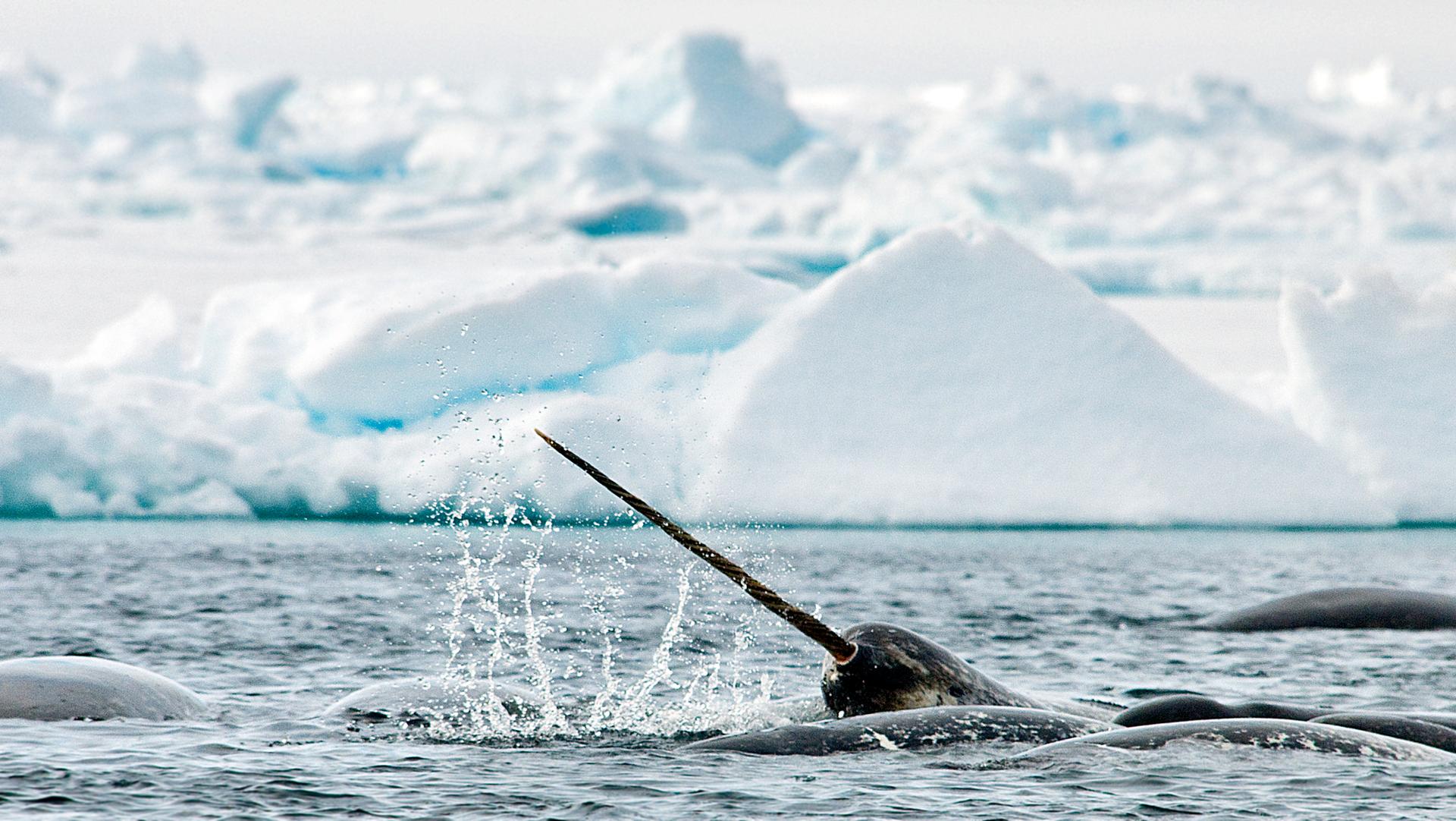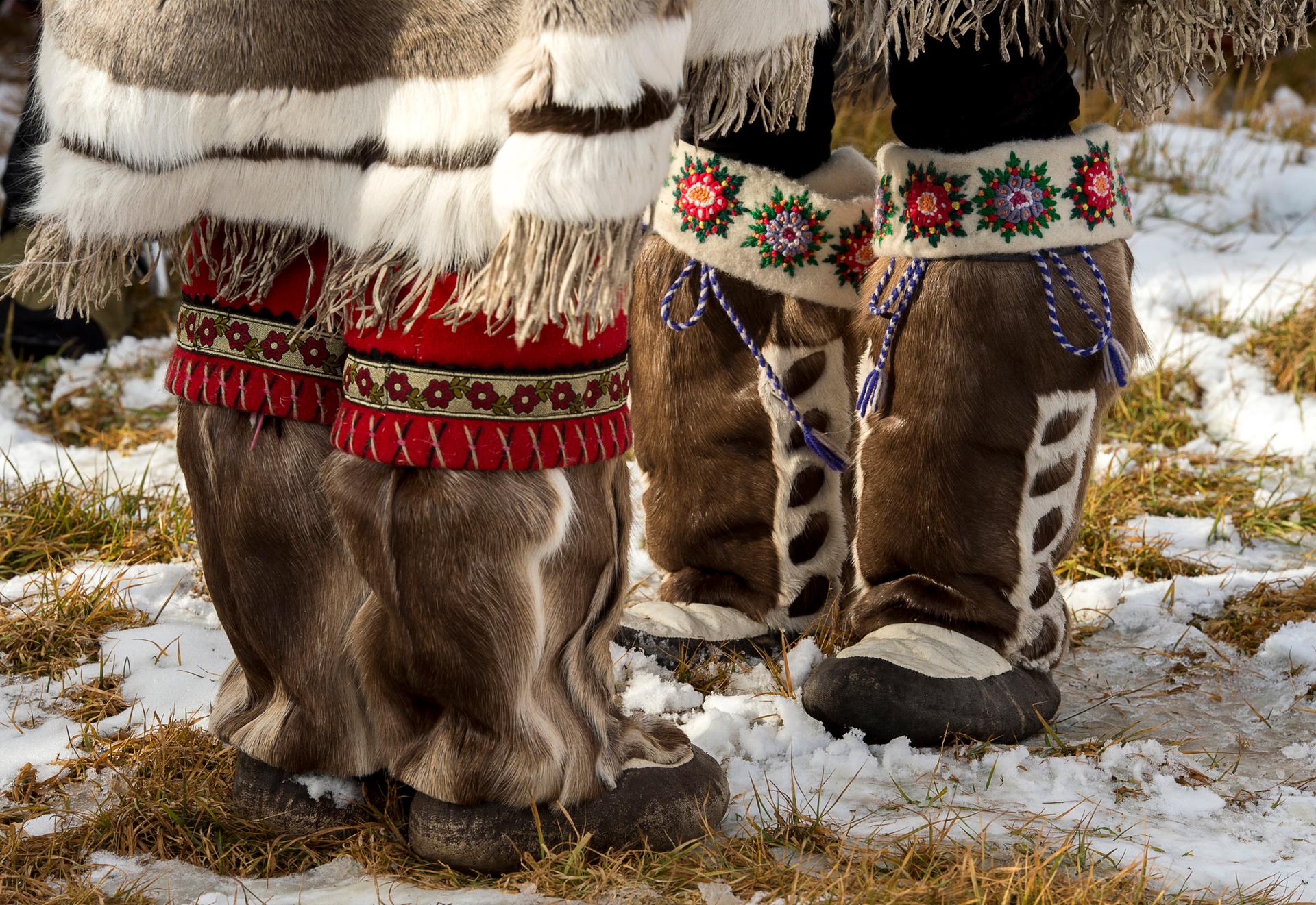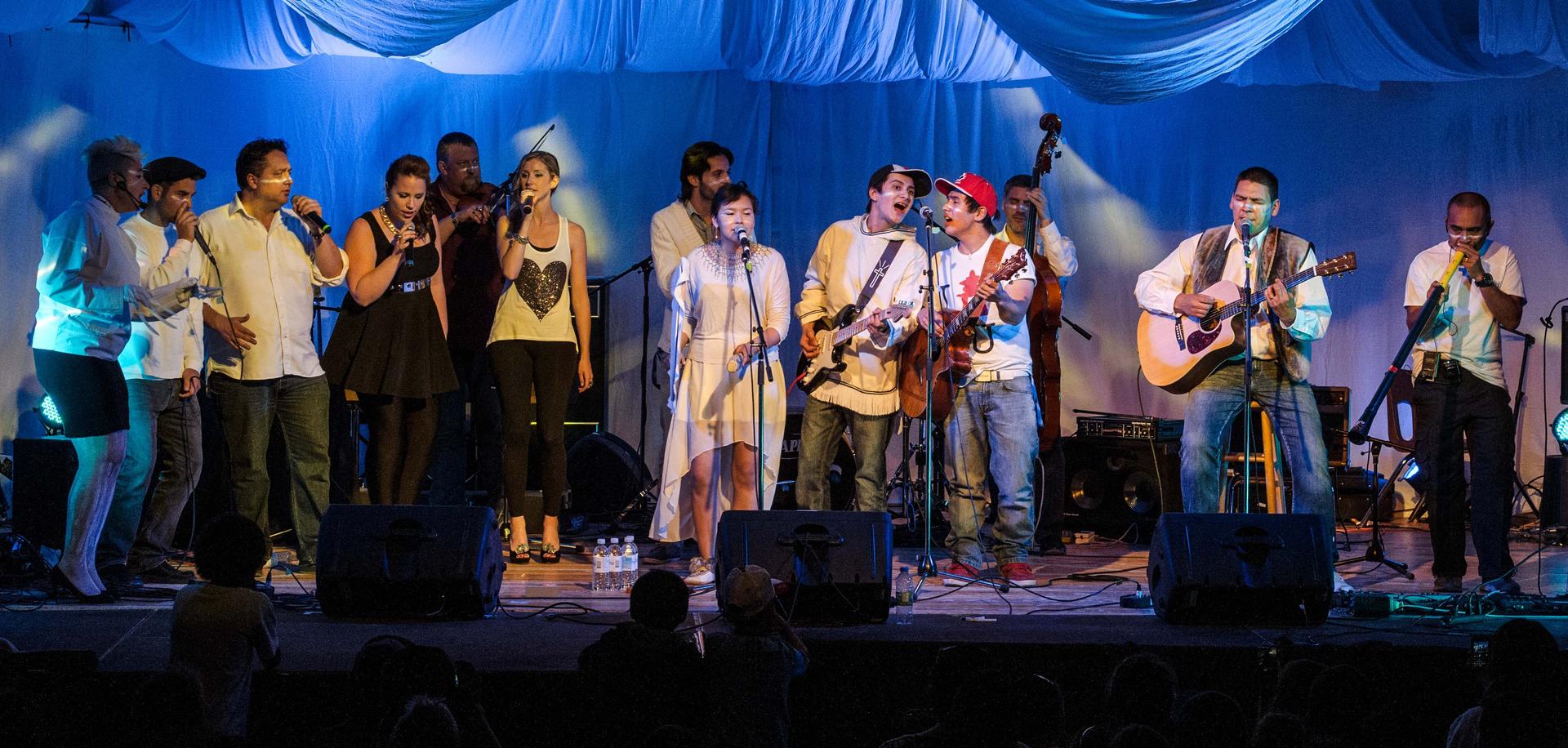High in the Arctic, Nunavut is wildly beautiful. It can also be harsh and isolated, covered in ice and snow for much of the year, with fewer than 40,000 people in a vast area the size of western Europe. Perhaps that's why it's amazing to discover that the people here, though far outnumbered by caribou, produce a prolific amount of exceptionally imaginative art and music. And summertime's relaxed Alianait Arts Festival is the best window into the North's culture, traditions, distinct sense of humor, and life philosophy.
Running for more than a decade now, the festival happens every year from late June to early July and includes music, film, storytelling, circus acrobats, arts, dance, theater, and children's entertainment, plus additional events such as concerts and performances throughout the year. The action takes place both outside and indoors under a circus-style big top. Inviting and unpretentious, it's a gathering that feels genuine and local, while at the same time welcoming to visitors. After long, dark winters, summer is a time of nearly 24 hours of daylight and the celebration vibe is in the air.
It's also in Iqaluit, Canada's northern-most capital: A small city of 7,250 mostly Inuit residents on Frobisher Bay, with an impressive number of artists, filmmakers, and musicians. You'll find folks warm, interested, and interesting. And, perhaps because distances are so large here, it feels like music and dance are a big part of the way people connect in person and share. That's at the heart of the festival, an authentic way to experience the North.
Fest highlights
What's great about Alianait is that emerging artists perform alongside an eclectic mix of Canadian and international artists. Musical entertainment in English and Inuktitut covers folk, blues, hip-hop, reggae, alt rock, acoustic, and pop, as well as Inuit traditional. Headlining shows are the big draw and past performers include alternative music JUNO-award winner Dan Mangan, dance troupe NeoIndigenA, contemporary-gospel singer Looee Arreak, and throat singing-fusion star Tanya Tagaq, known for her electrifying stage presence. There's usually a popular eastern Canada band, often with Celtic roots, too.
The line-up spotlights Inuit talent, with both performances and demos from across the entire North, including traditional Inuit throat singing and drum dancing. Meeting the locals is another highlight, and the format makes it easy. The festival is intentionally timed to coincide with the community's rhythm: Between the summer camping/fishing and snowmobiling seasons, since most locals spend their summers out on the land.
Workshops and demos

The headliners draw the crowds, but it's the open-format jam sessions everyone can get in on that are the most engaging. These are usually free and range from traditional Inuit throat singing to group Zumba classes, songwriting seminars, Greenlandic mask dancer workshops, and "live looping," or how to record layers of sound to create a solo performance. There are Inuit Games competitions and demos that make even the toughest conventional sports look wimpy. Festival-goers can tour Iqaluit's political and historic sites in between workshops, and get to know local artists, performers, and elders at them. Join, play an instrument, or just listen in. Impromptu sessions pop up a lot, too, especially on star-filled evenings outside by the bonfire.
Where to stay
Generally speaking, accommodations in Iqaluit are relatively simple. If you prefer small-scale lodging, try the comfortable Nunattaq Suites or tidy Beaches B&B, both with water views and hosted breakfast. Choose downtown's Frobisher Inn or Hotel Arctic for a big hotel chain type experience with all the bells and whistles. Boutique property The Discovery offers the most upscale experience in town.
Take a side trip

Nunavut is a playground for exotic creatures. Some intersting locals include the single-tusked narwhal, white beluga and bowhead whales, polar bears, caribou, and muskox, plus seal, walrus, ptarmigan, Arctic fox, wolves, and hare. In summer, the tundra comes alive with blooms. Hire a local guide to take you out on the land for wildlife spotting and fishing for char, hiking, camping, or berry picking in the flower-carpeted hills of Sylvia Grinnell Territorial Park just outside town. You can also make arrangements at the visitor center for a kayaking, boating, or canoeing tour. Other great spots are the 40-minute seaside trail walk to Apex, or Niaqunngut -- with lovely views and historic Hudson Bay structures -- or the Road to Nowhere, a scenic route for walking, skiing, or driving that winds by lakes and hills, then peters out. It doubles as a trailhead to outstanding hiking and skiing.
What to pack
Check in with the Unikkaarvik Visitor Centre when planning your trip. June and July are summer, but it's the Arctic, so expect cool North American spring or fall-type weather. Layering is the way to go, including a waterproof shell, warm down jacket, sturdy footwear, knit hat, and gloves. Also pack sun protection like strong sunblock and good sunglasses. Some travelers like to bring along a small item representative of their home -- ideal for trading or as a host gift.
What to take home

Iqaluit has some fascinating galleries, museums, and gift shops offering Inuit crafts and artwork you can take home as mementos or gifts. Look for soap stone and whale bone carvings, gorgeous bead work, handmade traditional fur garments, native jewelry, bone-handled knives, and colorful paintings or Nunavut's internationally-renowned wood-cut prints. Top stops are the Nunatta Sunakkutaangit Museum, in a former Hudson Bay building, and the visitor center, where you can ask where to find the best souvenirs. In addition, the Nunavut Arts and Crafts Association puts on an annual territory-wide artists' showcase where you can meet the makers and buy direct.
If you're venturing to Nunavut, don't miss this chance to step inside the North's thriving arts and music scene.
Start planning your Arctic adventure now at the Nunavut Tourism website.
